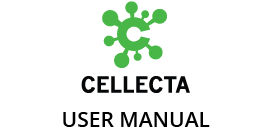- Keep enzyme components on the ice during use. All other components, including primers, may be placed at room temperature. Thaw components, gently vortex, and spin down before use. Please be sure to dissolve any precipitate if visible.
- Use Good Laboratory Practices to minimize cross-contamination of products. If possible, store all AIR kit components and perform the first part of the procedure (from cell sorting, RNA-Rev GSP hybridization, cDNA synthesis through PCR setup) in a “pre-PCR” room or at least in a PCR clean location set aside for RNA work. Use a set of equipment, pipettes, test tubes, other consumables, and all general reagents dedicated to work involving RNA. After running the RT and cDNA synthesis, run the PCR amplification reactions and analyze, purify, and store PCR products in a separate lab or area designated for PCR using a set of equipment, consumables, and reagents dedicated to working with PCR products. Always change pipette tips for adding components to new samples.
- To minimize the hands-on time and mistakes in liquid deposition in sorting/hybridization 96-well plate, we recommend running the assay using an 8-channel (or 12-channel) pipette. For aliquoting 5µl of Hybridization Master Mix from the provided Master plate in a new plate(s), use a new tip for each well for the Master plate to avoid cross-contamination between different barcoded RevGSPs.
- For bulk chain pairing assay, use a multichannel pipette to deposit 1 µl of the pool of T/B cells on the side wall of each well (to avoid cross-contamination between different wells) and briefly centrifuge the plate to mix the cells with hybridization buffer.
- For efficient binding of RNA-Rev GSPs hybrid to SPRIselect beads, it is important to uniformly mix beads with hybridization solution, which could be achieved by mixing the plate content in an Eppendorf Thermomixer R or MixMate shaker. For all enzymatic (extension) and PCR steps, we recommend using 0.2-ml or 0.5-ml test tubes.
- Do not reuse clear adhesive films to seal 96-well plates.
- SPRIselect beads are usually stored at +4°C and need to be adjusted to room temperature prior to use. Resuspend the beads using a shaker and dilute 4x using the provided SPRI bead dilution buffer. Dilution of SPRIselect beads with the provided dilution buffer allows for a reduced amount of beads used to purify RNA-RevGSP hybrids and a reduced volume of elution buffer for the reverse transcription step.
- Pipette viscous enzyme solutions slowly. After adding them to the reaction mix, ensure complete mixing by vortexing or pipetting up and down several times. Vortexing in an Eppendorf plate shaker is a preferable choice for 96-well plates, as pipetting in small well volumes is more time-consuming and could generate air bubbles.
- For several steps in the procedure, we recommend making a Master Mix by combining adequate amounts of the key reagents into a single tube and then aliquoting the appropriate portion from this combined mix into each sample. This approach helps ensure a consistent amount of reagent is added to all samples. For these Master Mix reactions, first calculate the volume of each component you need for all the reactions you are running, and pool the appropriate volumes of reagents together into a single tube. It is not necessary to add additional reagents to cover pipet variance, as the protocol below includes approximately 10% of extra reagents. Mix the pooled reagents, then pipette the required portion into each sample. If you are using a multichannel pipette, aliquot Master Mix in a tube strip (or reservoir) first, then pipette from this strip into each sample.
- For all scAIR protocol incubation steps in the thermocycler machine use a heated lid set up at standard 105°C.
Last modified:
7 July 2025
Need more help with this?
Contact Us

